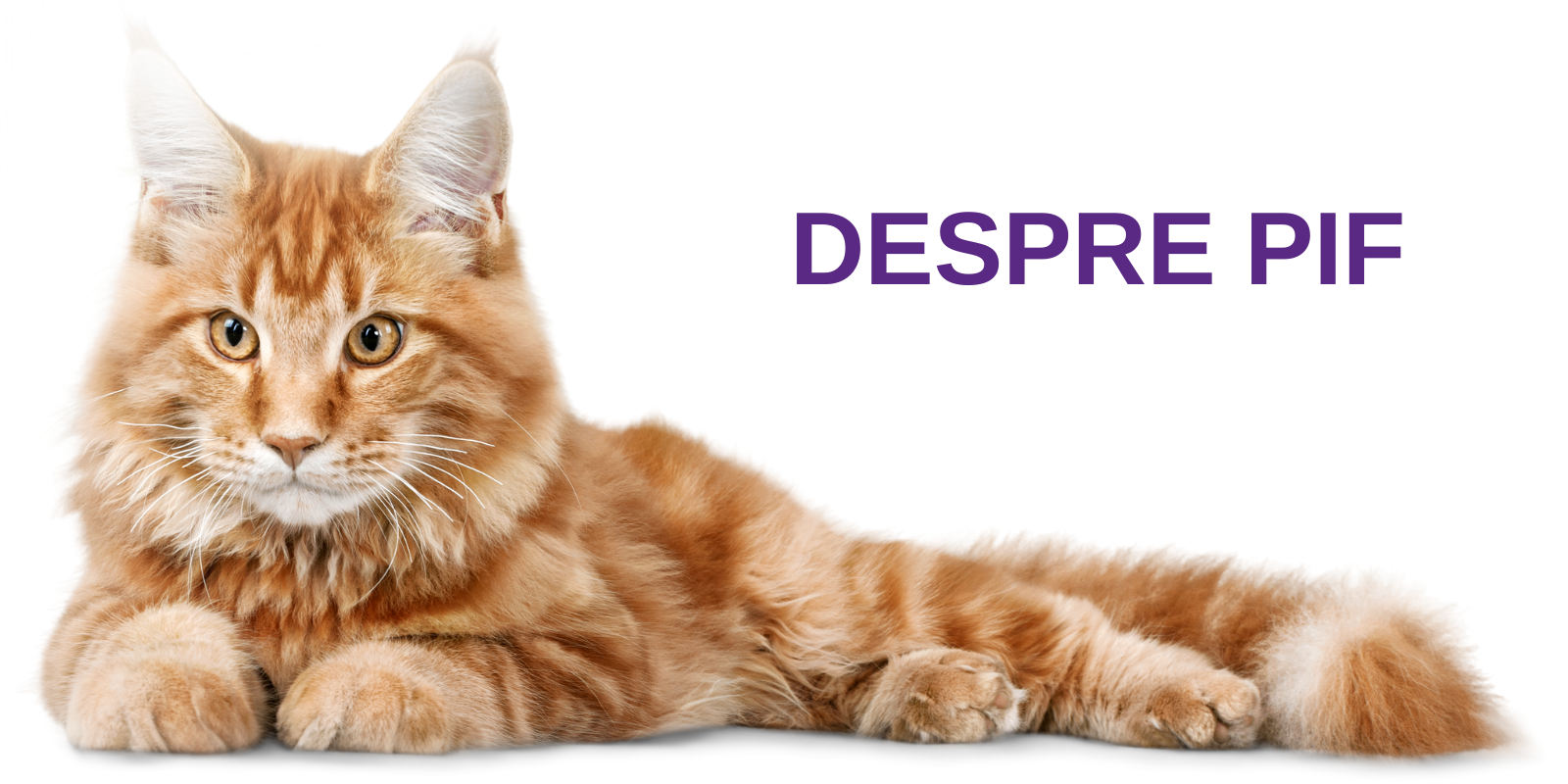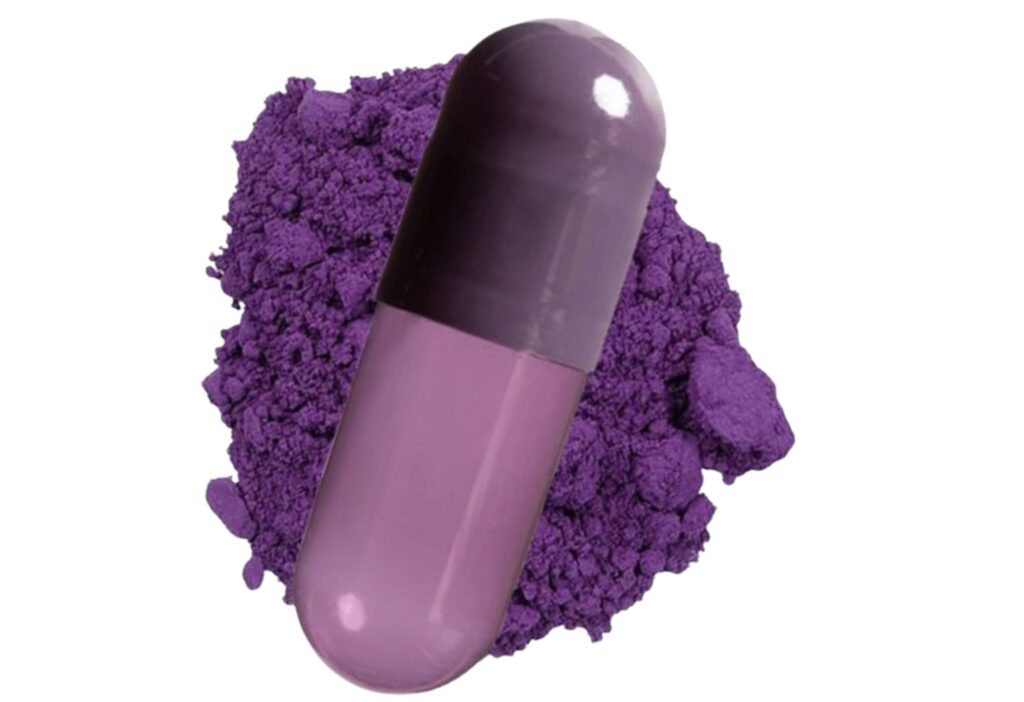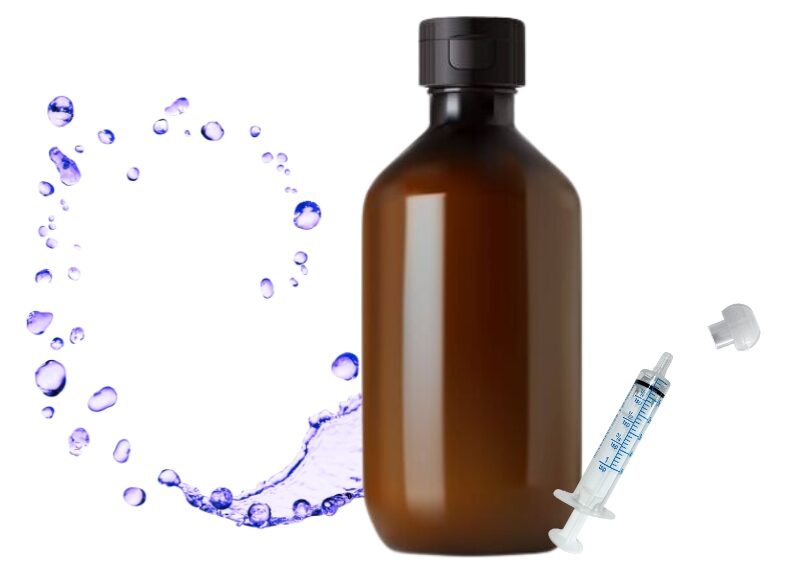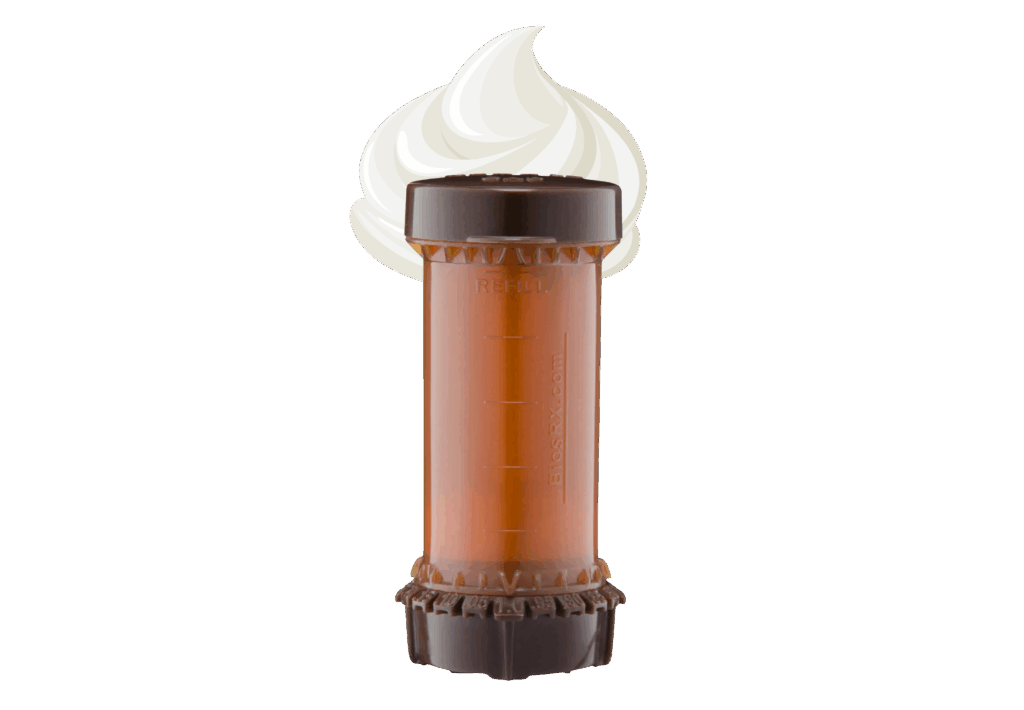
What is Feline Infectious Peritonitis (FIP)?
Feline Infectious Peritonitis (FIP) is a serious and often fatal disease caused by certain strains of feline coronavirus (FCoV). FIP can cause inflammation of the peritoneum (the lining of the abdomen) and can lead to fluid accumulation and severe organ damage.
The disease manifests itself in two main forms: "wet" form, characterized by fluid accumulation in the abdomen or chest, and "dry" form, which leads to the formation of granulomatous lesions in organs (liver, kidneys, etc.).
Symptoms of FIP
Feline infectious peritonitis is difficult to diagnose, as its clinical manifestations can resemble those of other diseases. In addition, the symptomatic picture differs depending on the form of the disease, "wet" or "dry". Here are a number of symptoms associated with this condition:
In the case of feline infectious peritonitis (FIP), one of the typical manifestations of the “wet” form is the accumulation of fluid in the abdominal cavity. This effusion causes a visible appearance of an enlarged and prominent abdomen, giving the impression of a “bloated belly”. In addition to the visible change in the cat’s silhouette, the accumulated fluid can cause discomfort, difficulty breathing due to pressure on the diaphragm and a progressive decrease in general health. This clinical feature is often an important clue in directing the diagnosis towards FIP, especially when associated with persistent fever, weight loss and lethargy.
In the “dry” form of feline infectious peritonitis (FIP), ocular symptoms occur relatively frequently and may be among the first signs that draw the attention of the veterinarian. These manifestations are the result of inflammation in the ocular structures and can vary in intensity and location. Among the most common are:
Anterior uveitis – the eye may appear red, with a "hazy" appearance, and the cat may exhibit sensitivity to light (photophobia).
Changes in iris color – sometimes the iris acquires an uneven shade or discolored spots appear.
Deposits on the cornea or in the anterior chamber – Visible inflammatory precipitates may appear in the form of whitish spots.
Ocular hemorrhages – small bleeding inside the eye, which can affect vision.
Progressive vision loss – untreated inflammation can lead, over time, to serious impairment of visual function, sometimes even blindness.
These ocular signs, along with persistent fever, weight loss, and other systemic manifestations, support the suspicion of FIP, but they can also be found in other diseases, making diagnosis even more difficult.
In feline infectious peritonitis (FIP), persistent fever is one of the most important and difficult to control clinical signs. It has several characteristics that make it suggestive of this disease:
The oscillating, but ever-present character – the cat may have periods when the temperature drops slightly, but rarely returns completely to normal. The fever remains constant, even when the animal receives regular treatment with antibiotics or anti-inflammatories.
Resistance to conventional treatments – this type of fever does not respond to usual therapies for bacterial infections, which raises suspicion of a viral and immune cause, such as FIP.
The mechanism of fever – In FIP, fever occurs due to an exaggerated reaction of the immune system to the mutated feline coronavirus. The virus triggers chronic inflammation, with the release of cytokines and other pro-inflammatory substances that disrupt thermoregulation. Basically, the body constantly “perceives” a threat and maintains a high temperature.
This persistent fever, associated with lethargy, loss of appetite and progressive weight loss, is an essential element in the clinical picture of PIF and one of the reasons why the veterinarian considers this disease when other more common causes of fever have been excluded.
Lethargy is a common symptom in cats affected by feline infectious peritonitis (FIP) and is characterized by marked fatigue, lack of energy, and decreased interest in daily activities. Basically, the cat sleeps more than usual, moves less, avoids play and interaction, and sometimes even eats less.
The causes of this state of lethargy in PIF are multiple:
The effect of persistent fever – a high and constant body temperature exhausts the body, causing weakness and lack of vitality.
Chronic inflammation – the exaggerated immune response against the mutated feline coronavirus consumes a lot of energy, which makes the cat seem constantly tired.
Malnutrition and weight loss – due to reduced appetite and increased consumption of resources by the inflammatory process, the body enters an energy imbalance, accentuating the feeling of weakness.
Damage to internal organs – depending on the form of the disease, accumulated fluid (in the "wet" form) or granulomatous lesions (in the "dry" form) can affect the liver, kidneys or nervous system, contributing to a general state of apathy and lack of reactivity.
In feline infectious peritonitis (FIP), the “dry” form can affect the central nervous system, leading to a variety of neurological symptoms. These symptoms occur because the virus and chronic inflammation cause vasculitis and granuloma formation in the brain and spinal cord. As a result, blood circulation and normal functioning of the nervous tissue are disrupted.
The most common neurological signs in FIP:
Gait disorders (ataxia) – the cat loses coordination, staggers, walks unsteadily or has difficulty jumping.
Tremors and convulsions – caused by cortical irritation and inflammation or damage to neurons.
Paresis or paralysis – sometimes the hind limbs are more affected, leading to major difficulties in movement.
Nystagmus (involuntary eye movements) and head tilt – indicates damage to the brainstem or inner ear.
Behavioral changes – the cat may become apathetic, disoriented or may exhibit sudden changes in temperament.
Decreased reflexes and stiffness – neurological signs may progressively worsen as the inflammation compromises increasingly extensive areas.
Why do these symptoms occur?
Inflammation of blood vessels (vasculitis) → reduces the supply of oxygen and nutrients to the nervous tissue.
Granuloma formation → inflammatory masses that press on nerve structures.
Increased intracranial pressure → the accumulation of inflammatory fluid can affect brain function.
Progressive destruction of nervous tissue → leads to loss of motor or sensory functions.
Neurological symptoms are often progressive and, unfortunately, worsen the prognosis of the disease. They, together with ocular and systemic signs, are part of the complex clinical picture of the “dry” form of FIP.
Weight loss is a characteristic and very common symptom in cats with feline infectious peritonitis (FIP), regardless of the form of the disease ("wet" or "dry"). It reflects the generalized impact of the infection and the exaggerated immune response on the metabolism and health of the animal.
Why does weight loss occur in PIF?
Reduced appetite (anorexia or hyporexia)
Affected cats eat less due to persistent fever, abdominal discomfort, or general malaise.
Over time, insufficient caloric intake leads to loss of body mass.
Increased energy consumption of the body
The chronic inflammatory process and the immune system's fight against the virus consume a lot of energy resources.
The body begins to use fat and muscle reserves to cope with this constant "alert state".
Malabsorption and damage to internal organs
In FIP, the liver, kidneys, and digestive system may be affected by granulomatous lesions or accumulated fluid.
These changes reduce the body's ability to digest and use nutrients efficiently.
Muscle wasting (cachexia)
The cat loses not only fat, but also muscle mass, which is noticeable through body weakness, prominent ribs, and decreased physical strength.
How is it observed clinically?
- The silhouette becomes visibly slimmer, even if the abdomen may be enlarged in volume (in the "wet" form).
- The cat appears fragile, with reduced muscle mass, dull fur, and less mobility.
- Weight loss progressively increases, in parallel with the worsening of other symptoms (lethargy, fever, digestive or neurological disorders).
Basically, weight loss in FIP is the combined result of reduced food intake, increased energy consumption, and damage to internal organs, being an important sign of the severity of the disease.
The effect of persistent fever
- High and constant temperatures disrupt normal appetite mechanisms.
- The cat feels a general state of discomfort and loses interest in food.
Systemic inflammatory process
- The virus and the exaggerated immune response release substances (cytokines) that act on the hunger nerve centers in the brain, inhibiting them.
- Basically, the body "behaves" as if it were chronically ill and voluntarily reduces food intake.
Abdominal discomfort and effusions (in the “wet” form)
- The fluid accumulated in the abdomen causes a feeling of pressure, nausea, and lack of interest in food.
Damage to internal organs (in "dry" form)
- Granulomatous lesions in the liver, kidneys, or intestines lead to digestive and metabolic disorders.
- The cat may experience nausea, vomiting or diarrhea, increasing its loss of appetite.
Neurological impact (in some cases)
- If the disease affects the central nervous system, eating behavior disorders or motor difficulties may occur that prevent the cat from eating normally.
How does it manifest clinically?
- The cat eats less and less or completely refuses food, including favorite foods.
- Sometimes they only consume water, sometimes even that is reduced.
- The loss of appetite becomes persistent and progressive, not going away with a change in food or regular treatments.
- It is often accompanied by lethargy, weight loss, and dull fur.
Loss of appetite in FIP is, therefore, the consequence of a set of factors - fever, chronic inflammation, visceral damage and general discomfort - and represents an alarm sign for the veterinarian, especially when it persists despite usual therapies.
Accumulation of fluid in the chest cavity (hydrothorax)
- In the "wet" form, pleural effusion is a major cause of dyspnea.
- Fluid accumulates between the lungs and the chest wall, reducing the space needed for the lungs to expand during inspiration.
- The cat breathes heavily, with large and rapid movements, and sometimes breathing with the mouth open is observed.
Diaphragmatic pressure due to abdominal fluid
- In the case of ascites, the enlarged abdomen pushes the diaphragm upward, further limiting lung expansion.
- This combined pressure accentuates the sensation of "lack of air".
Inflammation of lung tissue
- In the "dry" form, granulomatous lesions may appear in the lungs, which reduce the surface area available for gas exchange.
- This leads to hypoxia (decreased oxygen in the blood) and chronic respiratory difficulties.
Nervous system damage
- If the disease affects the central nervous system, including the respiratory control centers, respiratory rhythm disorders or ineffective breathing may occur.
How does it manifest clinically?
- Rapid and shallow breathing.
- Visible effort when inhaling, the cat sometimes standing with its neck stretched out and its elbows away from the body.
- Abnormal breath sounds.
- Cyanosis of the mucous membranes in severe cases, due to lack of oxygen.
- Increased lethargy, as the cat avoids movements that would increase its oxygen consumption.
In conclusion, respiratory distress in PIF most often occurs due to fluid accumulation in the chest and/or abdomen, but also due to inflammatory lung lesions or neurological damage. This symptom is an indicator of severity and, when it occurs, requires rapid intervention to stabilize the cat.
In the "dry" form, the virus and the immune response can produce granulomas in the liver, which affect liver function, including bilirubin metabolism.
Vasculitis and partial bile flow obstruction represent inflammation of the blood vessels, characteristic of FIP, which can compromise hepatic circulation, resulting in the ineffective processing of bilirubin that accumulates in the blood.
Secondary hemolysis
Sometimes, the immune response and inflammation can cause the destruction of red blood cells.
The increased amount of bilirubin released from destroyed erythrocytes exceeds the liver's ability to metabolize it, generating generalized jaundice.
Progressive liver failure
As the liver becomes increasingly affected, jaundice becomes visible and persists, marking an advanced stage of the disease.
How is it observed clinically?
- Yellowing of the sclera (whites of the eyes) – one of the first visible signs.
- Yellow oral and skin mucous membranes – gums, skin around the ears or lips.
- Urine may be darker in color (bilirubinuria).
- The cat also presents with lethargy, loss of appetite, weight loss and, sometimes, ascites.
Clinical importance
- The appearance of jaundice suggests severe liver damage and complicates the course of FIP.
- It is not specific only for FIP - it is also found in other diseases (hepatitis, hepatic lipidosis, hemopathies) - which is why differential diagnosis is essential.
- In PIF, jaundice associated with ascites, persistent fever, and lethargy is a major clue for the veterinarian.
In conclusion, jaundice in FIP occurs due to chronic inflammation and liver damage, being a sign of disease progression and a reserved prognosis.

About the masterful treatment prepared at Crisia Farm
Crisia Farm prepares master recipes, upon the recommendation of veterinarians, for the treatment of cats suffering from feline infectious peritonitis (FIP). The nitrile derivative of tetrahydrofuran, the active ingredient in the preparations made in the pharmacy laboratory in the form of syrup, capsules or oral paste, represents an antiviral treatment regimen that has demonstrated significant success in curing cats with FIP according to international studies. However, it is important to mention that, although treatments with this active substance have proven effective, they do not guarantee the cure of every cat with FIP, being very important the age, the speed of implementation of the treatment regimen, the comorbidities and the medical history of the patient. nitrile derivative of tetrahydrofuran
Key features of PIF capsules
Precise dosing and increased stability – capsules mask the taste of the substance. They are easy to store, have a small size and are sometimes preferred by the patient over other oral forms, which makes them easier to administer to sensitive or fussy cats.

Key features of the syrup for PIF
Easy to administer and adapted to small or sensitive cats – the syrup allows fine adjustment of the dose depending on the cat's exact weight and response to the treatment. It is gentle on the stomach, easy to accept thanks to the flavors of roasted chicken or tuna, easy to swallow and can be mixed, if necessary, with a small amount of wet food to facilitate acceptance, reducing stress for both the animal and its lover.
*Can also be prepared without flavors

Key features of the oral paste for PIF
Excellent acceptance even by fussy cats – the flavored paste mimics familiar and appetizing flavors, such as roasted chicken or tuna, making administering the treatment a pleasant experience for the cat. The device is pet friendly and allows for precise dosing, reducing refusal and stress associated with other forms of medication.
*Can also be prepared without flavors

Frequently asked questions
FIP is not contagious, and therefore it is not necessary to separate your cat with FIP from the other cats in the household.
Always seek the expertise of your veterinarian in such situations.
There are many unauthorized online sources that sell tablets with this active ingredient along with other medications. Most of these sources are located outside the country and do not source their active ingredients from officially registered distributors. There are major risks when ordering from unknown suppliers, including contamination with other substances, lack of efficacy, or incorrect concentration of the active ingredient.
At Crisia Farm, masterbatches for PIF are made in our clean room laboratory, which ensures zero probability of contamination. The active ingredient is obtained exclusively from certified sources and we check each certificate of analysis (CoA) before preparation, to guarantee the safety and maximum quality of the final preparation.
Many cats develop diarrhea at the beginning of treatment, but if the situation does not resolve itself within 1-2 days, consult your veterinarian.
We own 2 pharmacies in Bucharest:
- Crisia Pharmacy – Mihai Bravu
251-253 Mihai Bravu Street, Bucharest
Program:
Monday-Friday: 09:00 – 21:00
Saturday: 09:00 – 19:00
Sunday: CLOSED
*Excluding public holidays
E-mail: pacient@farmaciacrisia.ro
- Crisia Pharmacy – Dorobanti
Dorobantilor Street 111-131, Bucharest
Program:
Monday-Friday: 8:00 AM – 9:00 PM
Saturday: 9:00 – 19:00
Sunday: CLOSED
*Excluding public holidays
E-mail: pacient@farmaciacrisia.ro

